After starting with
Joey Hess, we continue with Paul Wise. What makes his star to shine are many things such as being a DSA (Debian System Administrator), a helpful hand on mailings list, encouraging people to join Debian teams but most of all - he has encyclopedia knowledge on Debian as a whole which he gladly shares with anyone who asks (very fast response on IRC channels). It is almost impossible for any single person to count all Debian teams, work and places - to know most of those things, you can image the vast knowledge which Paul has. The legend says that his brain has better and faster search engine algorithm on Debian related queries than all other engines combined. So lets see what he has to share with world.
me:
Who are you?
pabs: Paul Wise (
pabs) and I have to say that I'm no-where near as knowledgeable as your intro suggests.
me:
How did you start programming?
pabs: Messing around with fractals and graphics things in MS BASIC.
me:
How would you now advise others to start programming?
pabs: Pick an issue in a tool you use, investigate how the tool works and how you can change it, fix that and contribute the change back to the project that created that tool. In the process you will learn skills, interact with the community and contribute to the project.
me:
Setup of your development machine?
pabs: Lenovo Thinkpad with external monitor, Debian testing and some
tweaks
me
What is your preferable language (for hacking)? Why? How do you compare it to other languages?
pabs: I currently prefer Python for its readability. It still has some rough edges though the documentation covers them fairly well. I generally pick up new languages when working on projects written in them. Haskell is next on the horizon due to
Nikki and the Robots.
me:
Describe your current most memorable situation as software
developer/hacker?
pabs: I had a great time creating fractals in BASIC, learning about the Mandelbrot set, L-systems and more. My days and nights of hacking on frhed (a GPLed hex editor for Windows) to help me cheat at Civilisation were pretty memorable. frhed led to my work on reverse engineering the CHM file format (a documentation format for Windows programs). A stand-out moment during my time with Debian was hacking on the
derivates census patch generation code during the Debian UK BBQ weekend, surrounded by geeks playing Portal, cooking things, hacking on Debian and generally having a good time (thanks Steve!).
me:
Some memorable moments from Debian conferences?
pabs: There are so many; meeting Debian folks, playing Mao once and then never again, late night games of werewolf, both delectably delicious and hideously disgusting cheeses, fried insects, day trips to beautiful landscapes, inspiring keynotes, exciting BoFs, secret IRC channels for planning surprise birthday parties, blue hair, wet air, blocks of fried cheese, a vast quantity of icecream, pants, geeks in the surf, volcanoes, hiking, a wonderful view, a uni-cycling stormtrooper & more.
me:
How do you see future of Debian development?
pabs: I hope we will continue to exist and uphold our principles for the foreseeable future. I don't have any crystal balls though.
me:
You recently became member of Debian DSA - what is that like, what roles do you have and what tasks are in front of DSA?
pabs: We wrote a bit of text about that for
DPN recently.
me:
You have large knowledge on Debian and you share it with anyone who wants to know more. What motivates you to do so?
pabs: I want the operating system I personally rely on to exist into the future, helping folks work on and join Debian can help with that.
me:
Why should developers and users join Debian community? What makes Debian a great and happy place?
pabs: Every Debian contributor has different reasons for joining the community. Personally the Social Contract, the DFSG and the spirit and culture behind them are the main reason to be involved. I also like our many efforts towards technical excellence and correctness. Of course I've made a number of good friends over the years, especially as a result of attending DebConf every year since 2007.
me:
You are member of Debian publicity team which writes Debian news - do you need more people to join that team and how can they start?
pabs: Since there is an infinite amount of work to do, pretty much every part of Debian always needs help, that includes the publicity team. We published a
post about ways to help here.
me:
If someone wants to contribute to Debian in terms of packaging, can they do it anonymously (for example over Tor network, does Debian have .onion address)?
pabs: Due to Debian's penchant for transparency it is harder but there are definitely package maintainers who have built up a reputation for good work under a pseudonym over the years and become Debian contributors as a result. I'm not aware of completely anonymous package maintainers but there are definitely people who file bugs using one-off pseudonyms, which is almost the same thing as anonymously. There are definitely Debian contributors and members who use Tor while contributing to Debian. In fact, as Debian is very highly dependent on OpenPGP and the best practices for OpenPGP include
refreshing your keyring slowly over Tor, so probably quite a number of Debian contributors use Tor. As far as I know Debian itself does not run any Tor relays or onion services.
me:
What are places that non-packaging developers and people could join and help spread Debian even more?
pabs: There are many ways to
help Debian, including non-technical ones. Unfortunately our web page about helping Debian isn't quite up-to-date with all of them but a few more are to
volunteer at
DebConf, helo with
artwork requests,
speak about Debian at events or even come up with
ideas for projects. Whatever skills you have, Debian can probably make use of them. If you aren't sure where to start, jump on the debian-mentors mailing list or IRC channel and we can probably guide you to the right place within Debian. Don't worry about not being skilled enough, everyone starts somewhere.
me:
How do you see Debian will manage webapps?
pabs: Personally I prefer locally installed software, standard data formats and standard data transfer protocols to the wild webapps world but I understand they are becoming very popular to produce and use due to the ubiquity of the web browser platform. Antonio Terceiro is mentoring a
project for this year's newcomer mentorship programs (outreachy/gsoc) that aims to improve support for installing web apps on Debian installations. I hope it succeeds as it could help make Debian more popular on servers and home servers in particular.
me:
How would you advise Debian (and other FLOSS users) to setup their machine in terms of security and anonymity?
pabs: All technology has upsides and downsides. I would advise anyone to analyse their situation and protect themselves accordingly. For example if you have a bad memory, full disk encryption, which is based on pass-phrases might lead to data loss and physical security might be a better choice for protecting your data. The right choices around technology are very much a personal thing.
me:
Is it better to setup xmonad (because it is Haskell based WM) with small dependency chain or GNOME (because it is getting sandboxed apps) in term of security and privacy implications?
pabs: Again, the right choices around technology are very much a personal thing. Due to the design of X11, both of these are approximately equivalent from a window-manager security properties point of view, that is to say, pretty bad. Wayland is one of the possible X11 successors and offers much better security properties. GNOME folks are working on switching to Wayland. Ultimately though it comes down to how each person uses their window manager and which software they run under it.
me:
Should Debian join Tor project as distro that installs Tor relays by default - should it offer that as option in installer in Debian 9?
pabs: Running a Tor relay requires a reasonably fast and reliable Internet connection and should be a conscious
decision on behalf of the sysadmin for a computer so Debian probably shouldn't install them by default. If tasksel gets support for
installing tasks from Debian Pure Blends, then we could add a Tor relay task to the
Debian Sanctuary Pure Blend.
me:
Have you ever considered joining initiatives such as FreedomBox?
pabs: I was quite moved by Eben Moglen's
talk at DebConf10 in New York and the resulting
BoF. It seemed like a very ambitious project but I didn't really have the knowledge, skills or time to contribute yet.
me:
Are you a gamer? Valve Steam games are offered for free to Debian Developers - do you use steam and play Valve games? Your thoughts on Steam and non-free Linux gaming?
pabs: I play computer games occasionally, all from Debian main or ones that I'm packaging. 0ad is my current go-to for a bit of gaming. I don't have any experience with Steam or non-free games on Linux.
me:
Is there something you would change in FLOSS ecosystem?
pabs: Various folks have highlighted new and ongoing challenges for the FLOSS ecosystem in various places in recent years.
Something that I would like to highlight that does not get talked about enough is the choices we make around our digital artefacts. This is the discussion around "preferred form for modification" or "source". The "source" for a particular digital artefact is a deliberate choice on behalf of the authors. Often generated files are distributed alongside the "source" without any instructions for reproducing the generated files from the "source". It sometimes happens that FLOSS contributors forget to distriute what they have chosen as "source", instead just distributing the generated files. This is a fairly well known issue but still happens. What isn't thought about quite as much is that the choice of "source" has consequences for future development possibilities of that "source". Some forms of "source" are more expressive than others, can be modified in a wider variety of ways and are better choices in general. Sometimes the consequences of choosing less expressive forms are mild and other times they are quite important. I hope more people will start to think about these choices. Some examples where, in my opinion, various people could have made better choices are listed in
the mail I sent to the games team list last year.
Another thing I would like to highlight is the work that organisations like
Software Freedom Conservancy and
Software in the Public Interest do to protect, defend, promote and support FLOSS projects. It is very important work that needs our interest and support.
me:
Can FLOSS world create great alternatives to Viber, Dropbox, WhatsUp, Facebook, Skype and other non-free services?
pabs: I think that the FLOSS world has already created alternatives to all of those. The success of non-free services doesn't take these alternatives away but it does mean some of them are less useful because some of them are the kind of tools that become more useful with a larger amount of people using them. I don't know what it would take for the FLOSS alternatives to achieve similar success as
network effects are hard to overcome. Hopefully mako is right and the
network effects are overrated.
me:
Your thoughts and compare Cloud, IaaS, PaaS, SaaSS? To what should the FLOSS world pay more attention and energy?
pabs: Initially I dismissed these as buzzwords and a threat to Free Software. These days I view them as potential opportunities for Free Software. Cloud-related technologies such as OpenStack and virtual machines can make private compute farm hardware more flexible and useful to their owners. IaaS providers can be used to run Debian more simply and cheaply and therefore bring Debian to more people than possible with hardware. PaaS providers can be used to run Free Software services. SaaSS can be based entirely on Free Software and respect users. Of course, just like running Free Software on hardware (proprietary or libre), cloud technology, IaaS, PaaS and SaaSS all come with downsides. The FLOSS world should aim to inform users of our software of these downsides. For example, the Debian installer could note that it is running on Intel CPUs with a proprietary BIOS and various proprietary software running, that it is running on a mobile phone with a locked bootloader, that it is running in a Xen VM on machines owned by Amazon. Free Software services could note they are running on Google App Engine etc. Free Software web browsers, chat clients etc could note when they are connecting to proprietary network services. All these notes could inform users about the downsides present in the particular situation encountered. There is also much work to be done making it easier to run Free Software on top of or use Free Software to connect to all manner of platforms from lowRISC to UEFI to VMware to Google App Engine to GitHub to Facebook. The more places Free Software can reach, the more people will be exposed to the philosophy behind it and the more potential there is for folks to join the community. While co-option of the FLOSS world is a dangerous certainty, co-option of proprietary platforms might be able to expand the reach of the philosophy behind Free Software.
me:
Your thoughts on Purism (the open hardware laptop initiative that got recently funded on CrowdSupply)?
pabs: I don't know enough about that to comment but personally I am more interested in a laptop based on a libre CPU architecture. The
RISC-V ISA and the
lowRISC project seems to be one of the more promising possibilities at this point in time.
me:
Did you watch Citizenfour - comments on it?
pabs: I've seen the trailer and look forward to watching it at some point, I read there might be a
screening at DebConf15.

 We took a couple of days of for a family vacation / road trip through
the hills of Central Mexico. The overall trip does not look like
anything out of the ordinary
We took a couple of days of for a family vacation / road trip through
the hills of Central Mexico. The overall trip does not look like
anything out of the ordinary
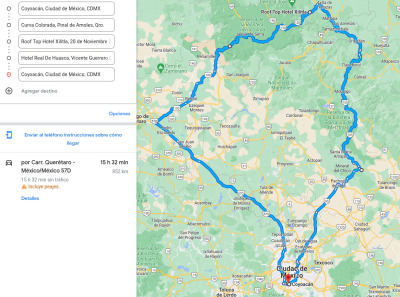 Other than the fact that Google forecasted we d take approximately
15.5 hours driving for 852Km that is, an average of almost 55
Km/h. And yes, that s what we signed up for. And that s what we
got. Of course, the exact routes are not exactly what Google suggested
(I can say we optimized a bit the route, i.e., by avoiding the
metropolitan area of Quer taro, at the extreme west, and going via San
Juan del R o / Tequisquiapan / Bernal).
The first stretch of the road is just a regular, huge highway, with
no particular insights. The highways leaving and entering Mexico City
on the North are not fun nor beautiful, only they are needed to get
nice trips going
Mexico City sits at a point of changing climates. Of course, it is a
huge city And I cannot imagine how it would be without all of the
urbanization it now sports. But anyway: On the West, South, and part
of the East, it is surrounded by high mountains, with beautiful and
dense forests. Mexico City is 2200m high, and most of the valley s
surrounding peaks are ~3000m (and at the South Eastern tip, our two
big volcanoes, Popocat petl and Iztacc huatl, get past the 5700m
mark). Towards the North, the landscape is flatter and much more
dry. Industrial compounds give way to dry grasslands. Of course,
central Mexico does not understand the true meaning of flat, and the
landscape is full with eh-not-very-big mountains.
Then, as we entered Quer taro State, we started approaching
Bernal. And we saw a huge rock that looks like it is not supposed
to be there! It just does not fit the surroundings.
Other than the fact that Google forecasted we d take approximately
15.5 hours driving for 852Km that is, an average of almost 55
Km/h. And yes, that s what we signed up for. And that s what we
got. Of course, the exact routes are not exactly what Google suggested
(I can say we optimized a bit the route, i.e., by avoiding the
metropolitan area of Quer taro, at the extreme west, and going via San
Juan del R o / Tequisquiapan / Bernal).
The first stretch of the road is just a regular, huge highway, with
no particular insights. The highways leaving and entering Mexico City
on the North are not fun nor beautiful, only they are needed to get
nice trips going
Mexico City sits at a point of changing climates. Of course, it is a
huge city And I cannot imagine how it would be without all of the
urbanization it now sports. But anyway: On the West, South, and part
of the East, it is surrounded by high mountains, with beautiful and
dense forests. Mexico City is 2200m high, and most of the valley s
surrounding peaks are ~3000m (and at the South Eastern tip, our two
big volcanoes, Popocat petl and Iztacc huatl, get past the 5700m
mark). Towards the North, the landscape is flatter and much more
dry. Industrial compounds give way to dry grasslands. Of course,
central Mexico does not understand the true meaning of flat, and the
landscape is full with eh-not-very-big mountains.
Then, as we entered Quer taro State, we started approaching
Bernal. And we saw a huge rock that looks like it is not supposed
to be there! It just does not fit the surroundings.
 Shortly after Bernal, we entered a beautiful, although most crumpled,
mountain ridge: Sierra Gorda de
Quer taro. Sierra Gorda
encompasses most of the North of the (quite small 11500Km total)
state of Quer taro, plus portions of the neighboring states; other
than the very abrupt and sharp orography, what strikes me most is the
habitat diversity it encompasses. We started going up an absolute
desert, harsh and beautiful; we didn t take pictures along the way as
the road is difficult enough that there are almost no points for
stopping for refreshments or for photo opportunities. But it is quite
majestic. And if you think deserts are barren, boring places well,
please do spend some time enjoying them!
Anyway At on point, the road passes by a ~3100m height, and
suddenly Pines! More pines! A beautiful forest! We reached our
first stop at the originally mining town of Pinal de
Amoles.
Shortly after Bernal, we entered a beautiful, although most crumpled,
mountain ridge: Sierra Gorda de
Quer taro. Sierra Gorda
encompasses most of the North of the (quite small 11500Km total)
state of Quer taro, plus portions of the neighboring states; other
than the very abrupt and sharp orography, what strikes me most is the
habitat diversity it encompasses. We started going up an absolute
desert, harsh and beautiful; we didn t take pictures along the way as
the road is difficult enough that there are almost no points for
stopping for refreshments or for photo opportunities. But it is quite
majestic. And if you think deserts are barren, boring places well,
please do spend some time enjoying them!
Anyway At on point, the road passes by a ~3100m height, and
suddenly Pines! More pines! A beautiful forest! We reached our
first stop at the originally mining town of Pinal de
Amoles.
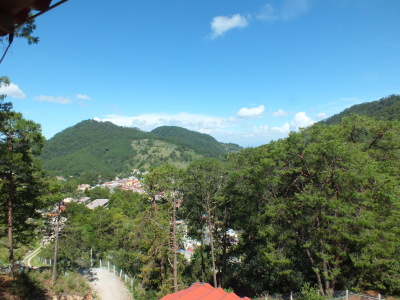


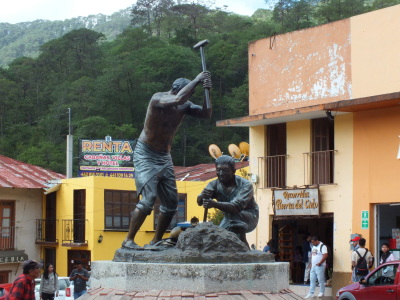 After spending the night there and getting a much needed rest, we
started a quite steep descent towards Jalpan de
Serra. While it is
only ~20Km away on the map, we descended from 2300 to 760 meters of
altitude (and the road was over 40Km long).
After spending the night there and getting a much needed rest, we
started a quite steep descent towards Jalpan de
Serra. While it is
only ~20Km away on the map, we descended from 2300 to 760 meters of
altitude (and the road was over 40Km long).
 Being much lower, the climate drastically changed from cool and humid
to quite warm and the body attitude in the kids does not lie!
Being much lower, the climate drastically changed from cool and humid
to quite warm and the body attitude in the kids does not lie!
 In the mid-18th century, Fray Jun pero Serra established five missions
to evangelize the population of this very harsh territory, and the
frontispiece for the church and monastery in Jalpan is quite
breathtaking.
In the mid-18th century, Fray Jun pero Serra established five missions
to evangelize the population of this very harsh territory, and the
frontispiece for the church and monastery in Jalpan is quite
breathtaking.

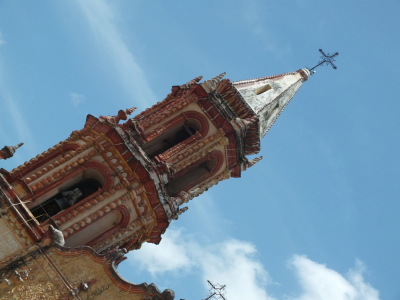


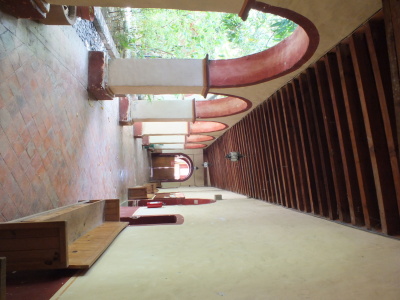 But we were just passing by Jalpan. A short visit to the church and to
the ice-cream shop, and we were again on our way. We crossed the state
border, entering San Luis Potos , and arrived to our main destination:
Xilitla, the little town in
the beautiful Huasteca where
the jungle meets surrealism.
Xilitla was chosen by the British poet and patron of various
surrealist artists https://en.wikipedia.org/wiki/Edward_James. He was a British noble (an unofficial grandson of King
Edward VII), and heir to a huge fortune. I m not going to repeat here
his very well known biography suffice to say that he got in love
with the Huasteca, and bought a >30ha piece of jungle and mountain
close to the Xilitla town, and made it his house. With very ample
economic resources, in the late 1940s he started his lifelong project
of building a surrealist garden.
And Well, that s enough blabbering for me. I m sharing some
pictures I took there. The place is plainly magic and
wonderful. Edward James died in 1984, and his will decrees that after
his death, the jungle should be allowed to reclaim the constructions
so many structures are somewhat crumbling, and it is expected they
will break down in the following decades. But for whoever comes to
Mexico This magic place is definitely worth the heavy ride to the
middle of the mountains and to the middle of the jungle.
But we were just passing by Jalpan. A short visit to the church and to
the ice-cream shop, and we were again on our way. We crossed the state
border, entering San Luis Potos , and arrived to our main destination:
Xilitla, the little town in
the beautiful Huasteca where
the jungle meets surrealism.
Xilitla was chosen by the British poet and patron of various
surrealist artists https://en.wikipedia.org/wiki/Edward_James. He was a British noble (an unofficial grandson of King
Edward VII), and heir to a huge fortune. I m not going to repeat here
his very well known biography suffice to say that he got in love
with the Huasteca, and bought a >30ha piece of jungle and mountain
close to the Xilitla town, and made it his house. With very ample
economic resources, in the late 1940s he started his lifelong project
of building a surrealist garden.
And Well, that s enough blabbering for me. I m sharing some
pictures I took there. The place is plainly magic and
wonderful. Edward James died in 1984, and his will decrees that after
his death, the jungle should be allowed to reclaim the constructions
so many structures are somewhat crumbling, and it is expected they
will break down in the following decades. But for whoever comes to
Mexico This magic place is definitely worth the heavy ride to the
middle of the mountains and to the middle of the jungle.




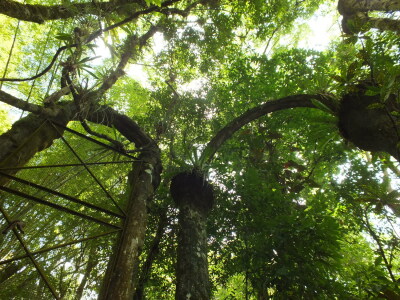


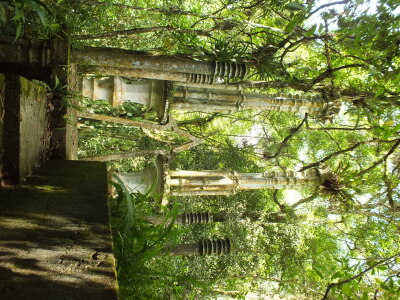




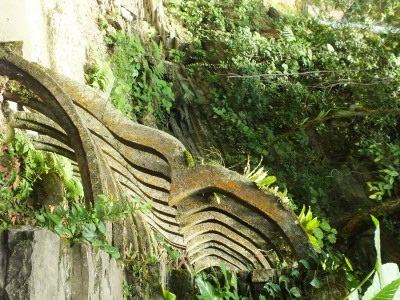






 Xilitla now also hosts a very good museum with sculptures by Leonora
Carrington, James long-time friend, but I m not going to abuse this
space with even more pictures. And of course, we did more, and enjoyed
more, during our three days in Xilitla.
And for our way back I wanted to try a different route. We decided
to come back to Mexico City crossing Hidalgo state instead of
Quer taro. I had feared the roads would be in a worse shape or would
be more difficult to travel And I was happy to be proven wrong!
Xilitla now also hosts a very good museum with sculptures by Leonora
Carrington, James long-time friend, but I m not going to abuse this
space with even more pictures. And of course, we did more, and enjoyed
more, during our three days in Xilitla.
And for our way back I wanted to try a different route. We decided
to come back to Mexico City crossing Hidalgo state instead of
Quer taro. I had feared the roads would be in a worse shape or would
be more difficult to travel And I was happy to be proven wrong!
 This was the longest driving stretch approximately 6:30 for
250Km. The roads are in quite decent shape, and while there are some
stretches where we were quite lonely (probably the loneliest one was
the sharp ascent from Tamazunchale to the detour before Orizatl n),
the road felt safe and well kept at all times. The sights all across
Eastern Hidalgo are breathtaking, and all furiously green (be it with
really huge fern leaves or with tall, strong pines), until
Zacualtip n.
This was the longest driving stretch approximately 6:30 for
250Km. The roads are in quite decent shape, and while there are some
stretches where we were quite lonely (probably the loneliest one was
the sharp ascent from Tamazunchale to the detour before Orizatl n),
the road felt safe and well kept at all times. The sights all across
Eastern Hidalgo are breathtaking, and all furiously green (be it with
really huge fern leaves or with tall, strong pines), until
Zacualtip n.
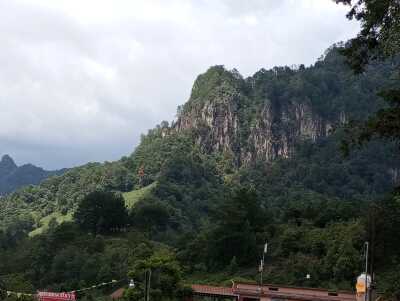 And just as abruptly or more as when we entered Pinal de Amoles We
crossed Orizatl n, and we were in a breathtaking arid, desert-like
environment again. We crossed the Barranca de Metztitl n natural
reserve, and arrived to spend the night at Huasca de Ocampo.
There are many more things we could have done starting at Huasca, a
region where old haciendas thrived, full of natural formations, and
very very interesting. But we were tired and pining to be finally back
home. So we rested until mid-morning and left straight back home in
Mexico City. Three hours later, we were relaxing, preparing lunch, the
kids watching whatever-TV-like-things are called nowadays.
All in all, a very beautiful vacation!
And just as abruptly or more as when we entered Pinal de Amoles We
crossed Orizatl n, and we were in a breathtaking arid, desert-like
environment again. We crossed the Barranca de Metztitl n natural
reserve, and arrived to spend the night at Huasca de Ocampo.
There are many more things we could have done starting at Huasca, a
region where old haciendas thrived, full of natural formations, and
very very interesting. But we were tired and pining to be finally back
home. So we rested until mid-morning and left straight back home in
Mexico City. Three hours later, we were relaxing, preparing lunch, the
kids watching whatever-TV-like-things are called nowadays.
All in all, a very beautiful vacation!
 LaTeX the age-old typesetting system makes me angry. Not because it's bad.
To clarify, not because there's something better. But because there should
be.
When writing a document using LaTeX, if you are prone to procrastination
it can be very difficult to focus on the task at hand, because there are so
many
LaTeX the age-old typesetting system makes me angry. Not because it's bad.
To clarify, not because there's something better. But because there should
be.
When writing a document using LaTeX, if you are prone to procrastination
it can be very difficult to focus on the task at hand, because there are so
many 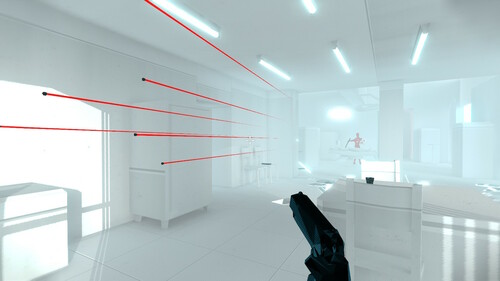
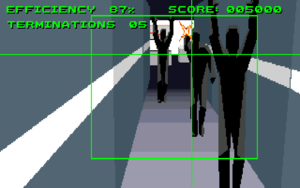
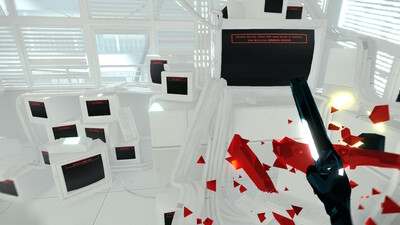

 Wouter s tasks
Wouter s tasks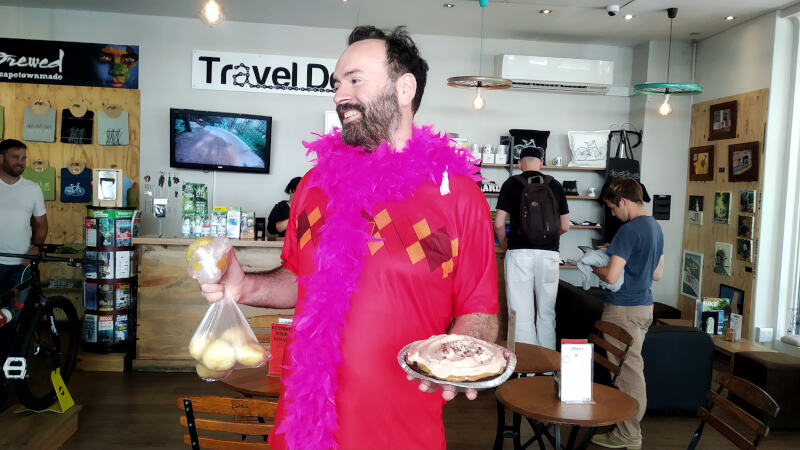 Wouter s props, needed to complete his tasks
Wouter s props, needed to complete his tasks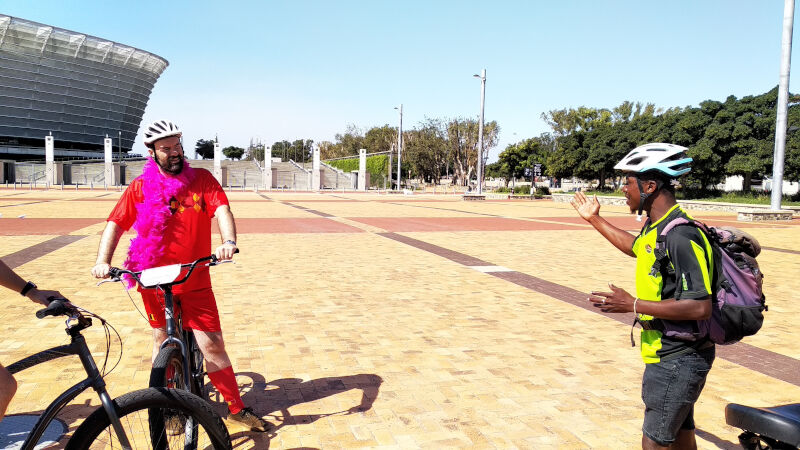 Bike tour leg at Cape Town Stadium.
Bike tour leg at Cape Town Stadium. Seeking out 29 year olds.
Seeking out 29 year olds.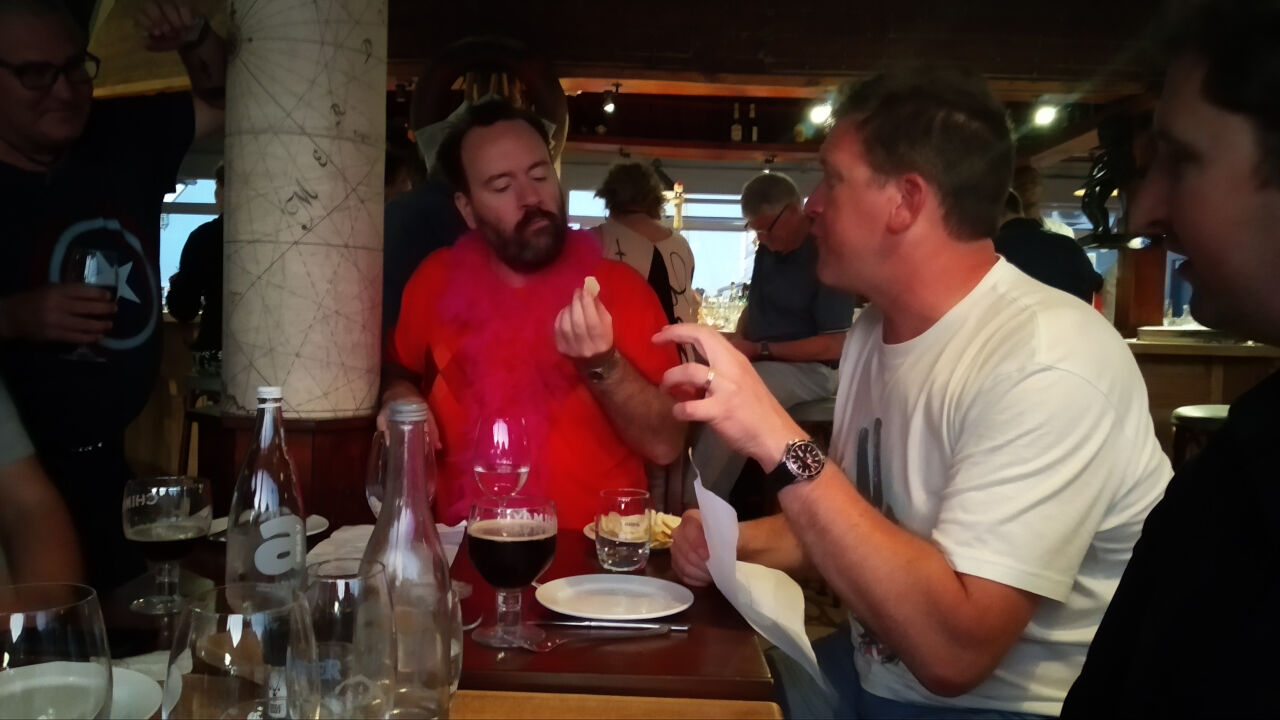 Wouter finishing his lemon and actually seemingly enjoying it.
Wouter finishing his lemon and actually seemingly enjoying it.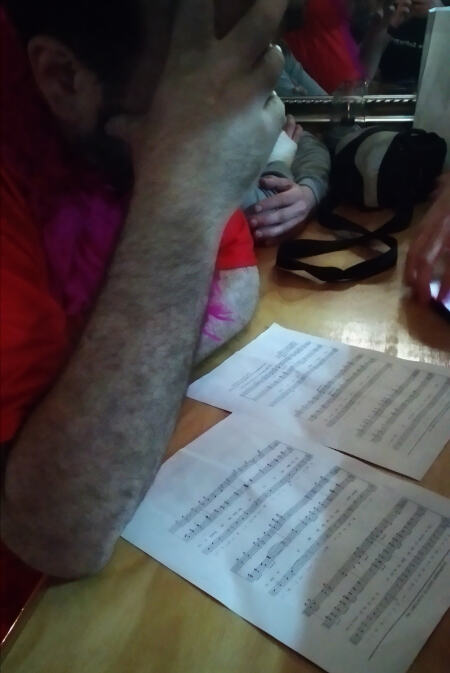 Reciting South African national anthem notes and lyrics.
Reciting South African national anthem notes and lyrics.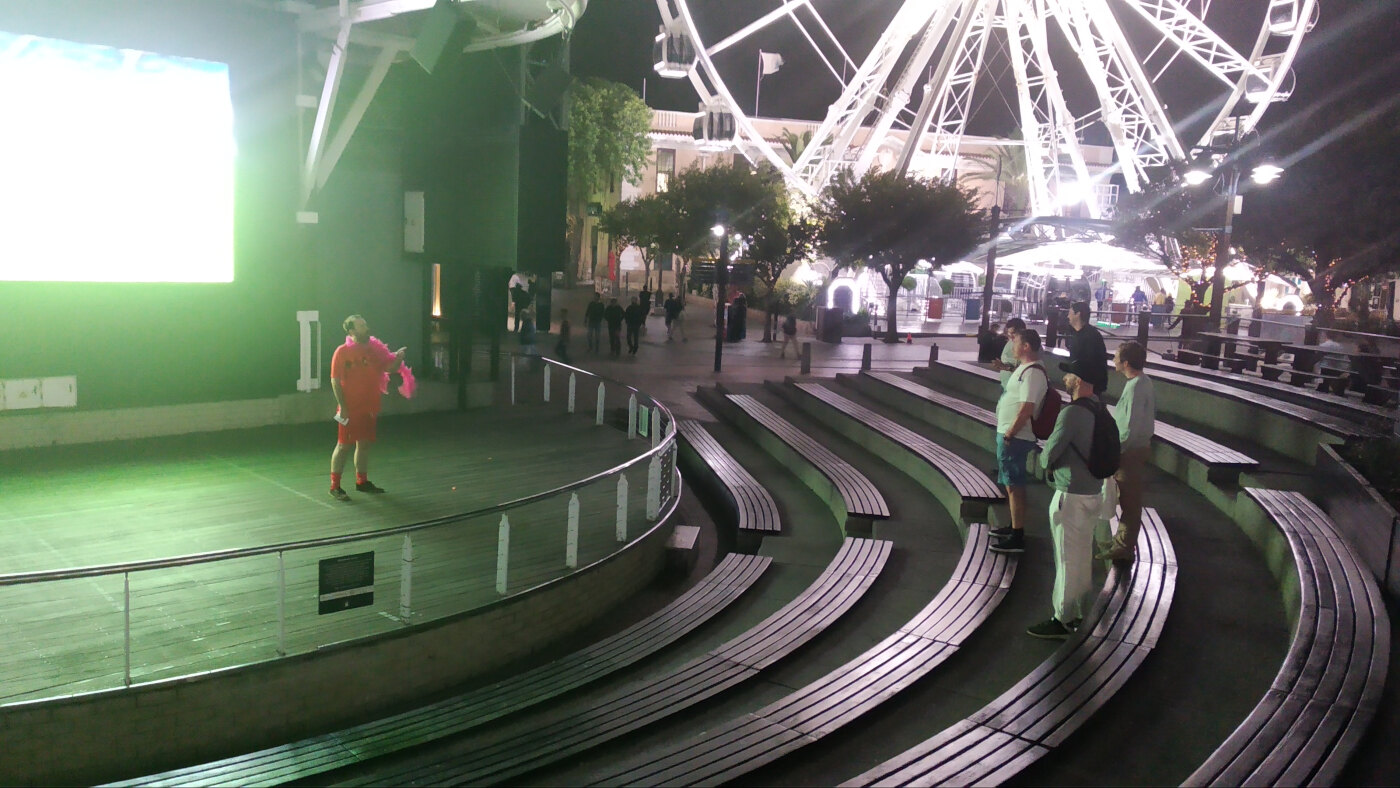 The national anthem, as performed by Wouter (I was actually impressed by how good his pitch was).
The national anthem, as performed by Wouter (I was actually impressed by how good his pitch was).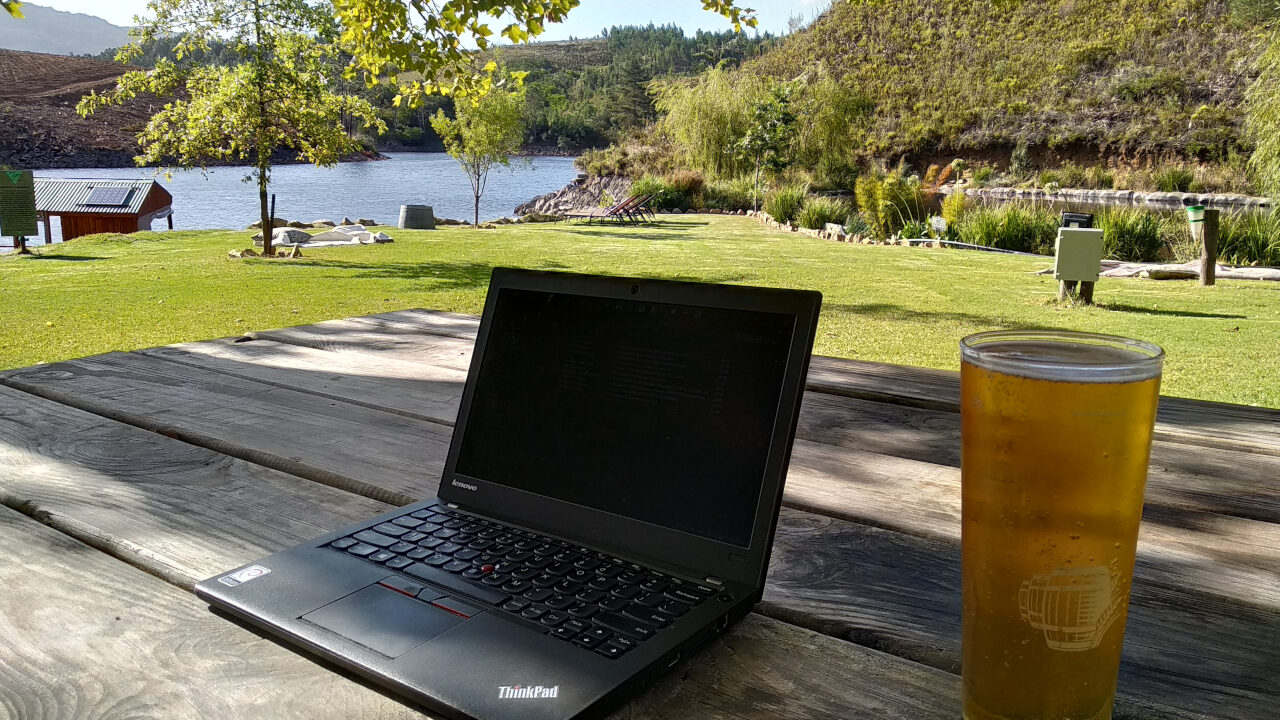
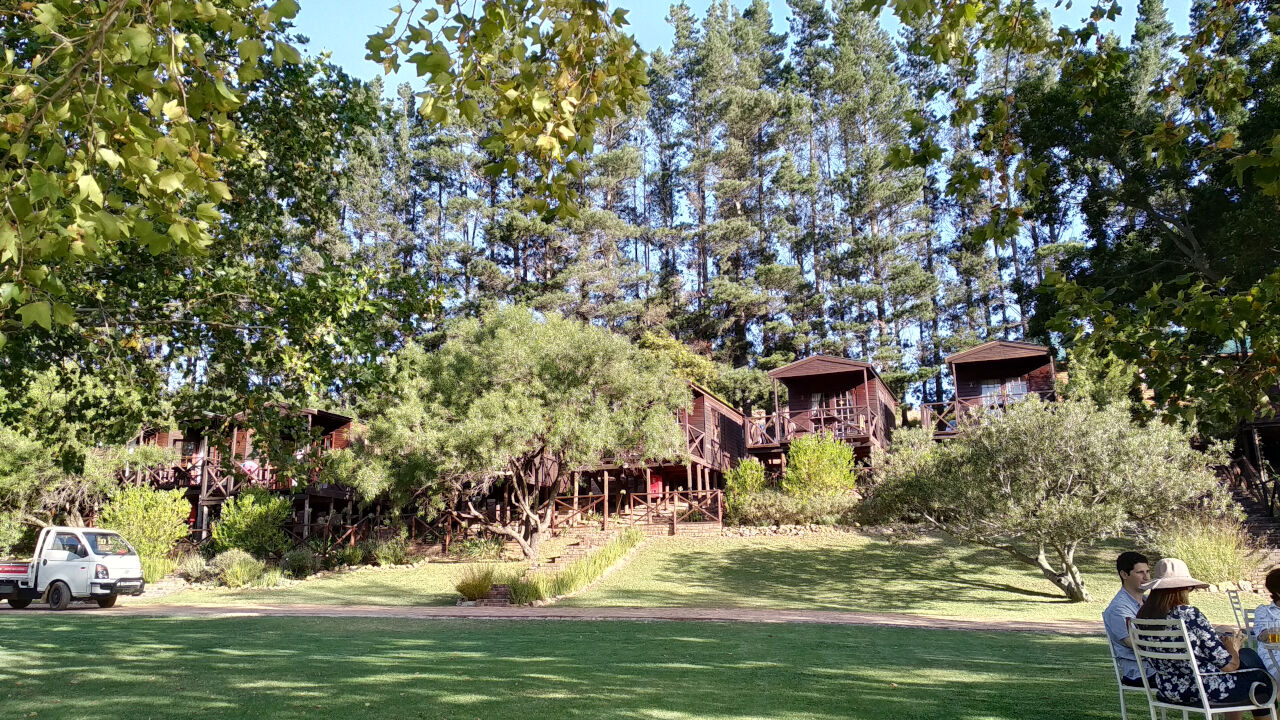 Accommodation at the lodge
Accommodation at the lodge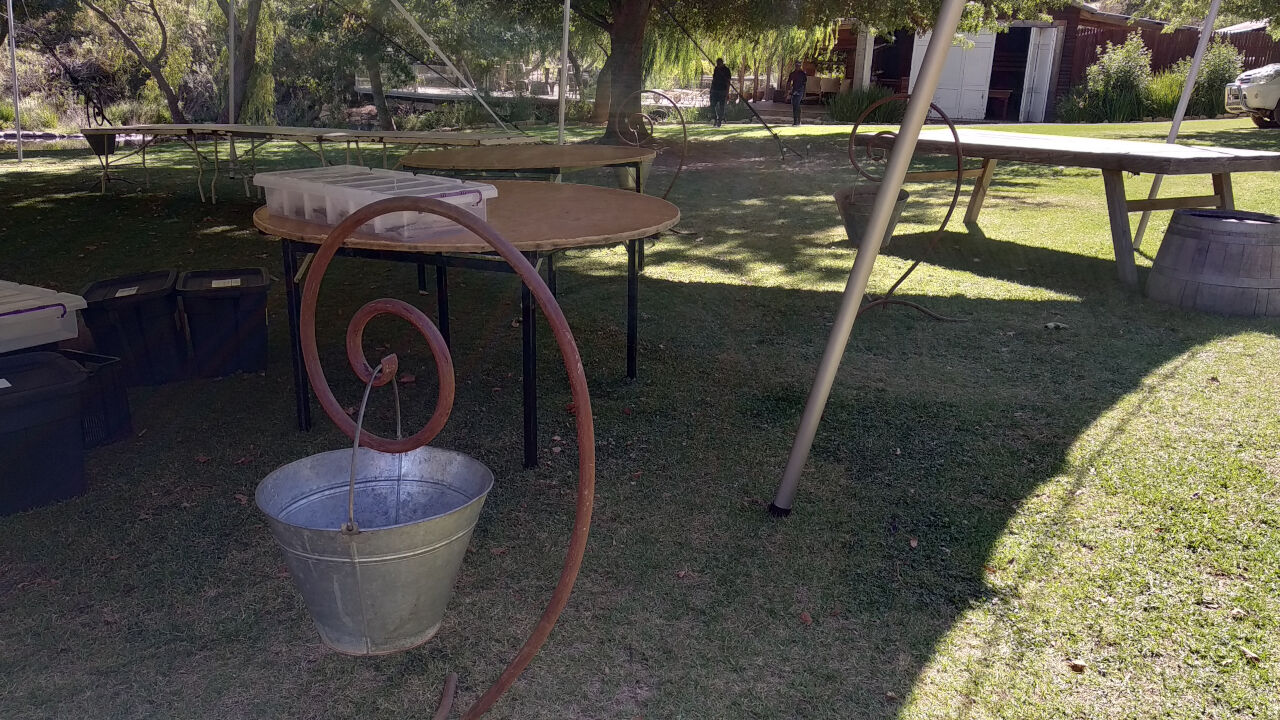 Debian swirls everywhere
Debian swirls everywhere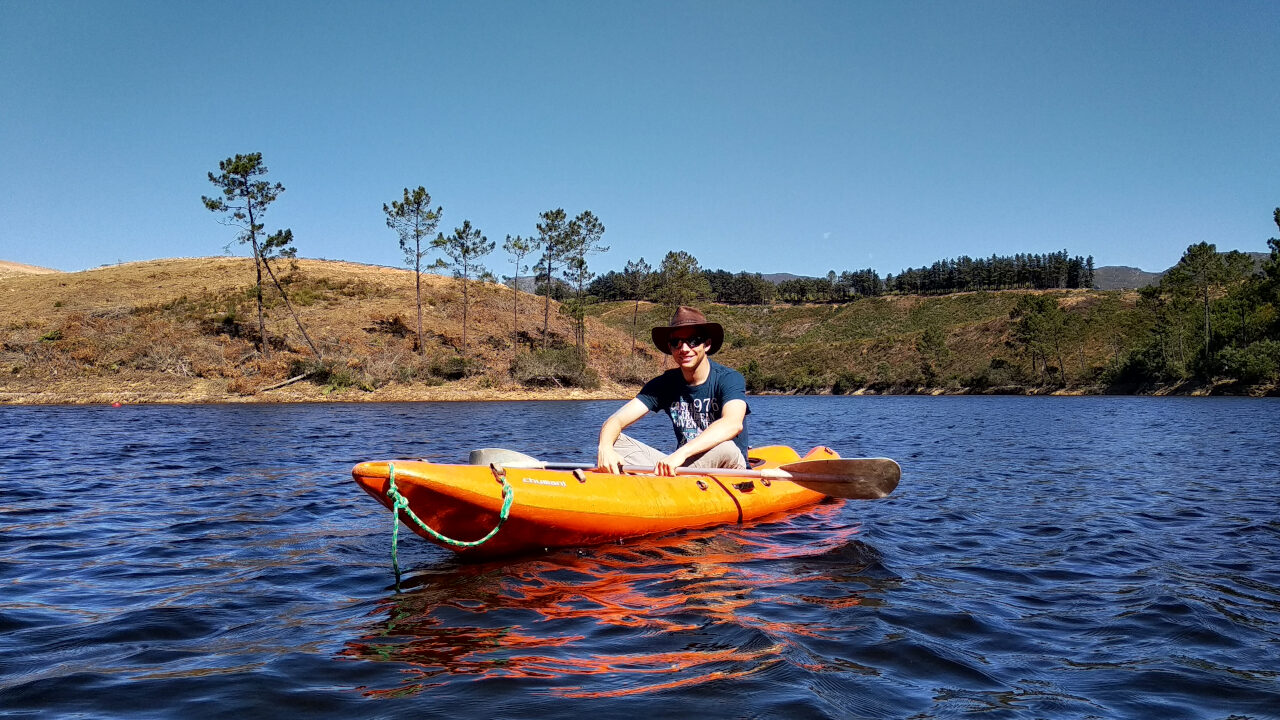 I took a canoe ride on the river and look what I found, a paddatrapper!
I took a canoe ride on the river and look what I found, a paddatrapper!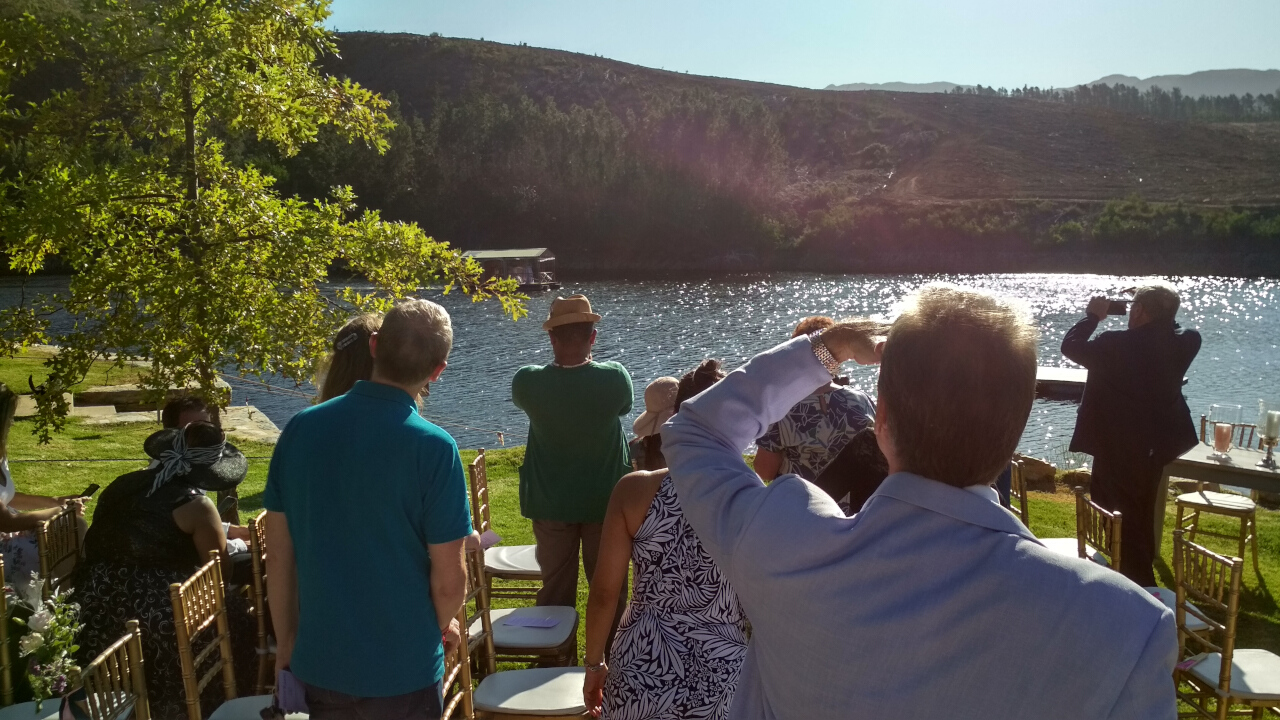
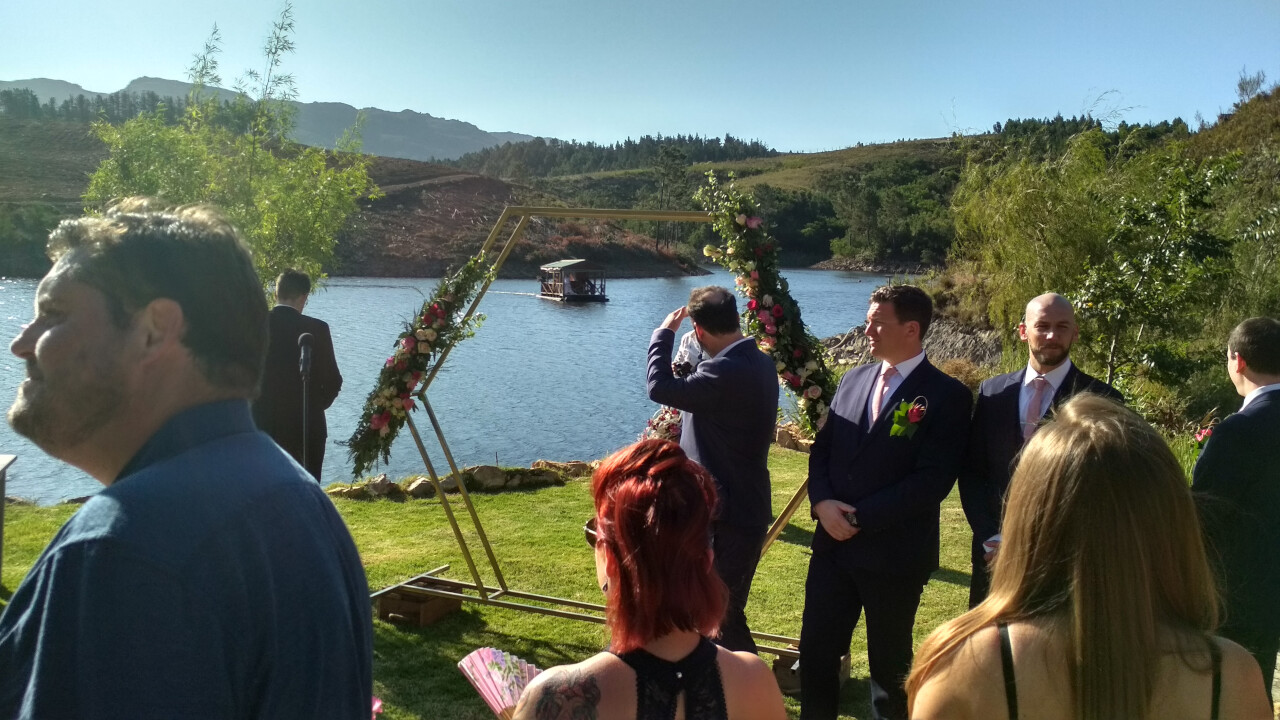

 A bit of digital zoomage of previous image.
A bit of digital zoomage of previous image. Time to say the vows.
Time to say the vows. Just married. Thanks to Sue Fuller-Good for the photo.
Just married. Thanks to Sue Fuller-Good for the photo.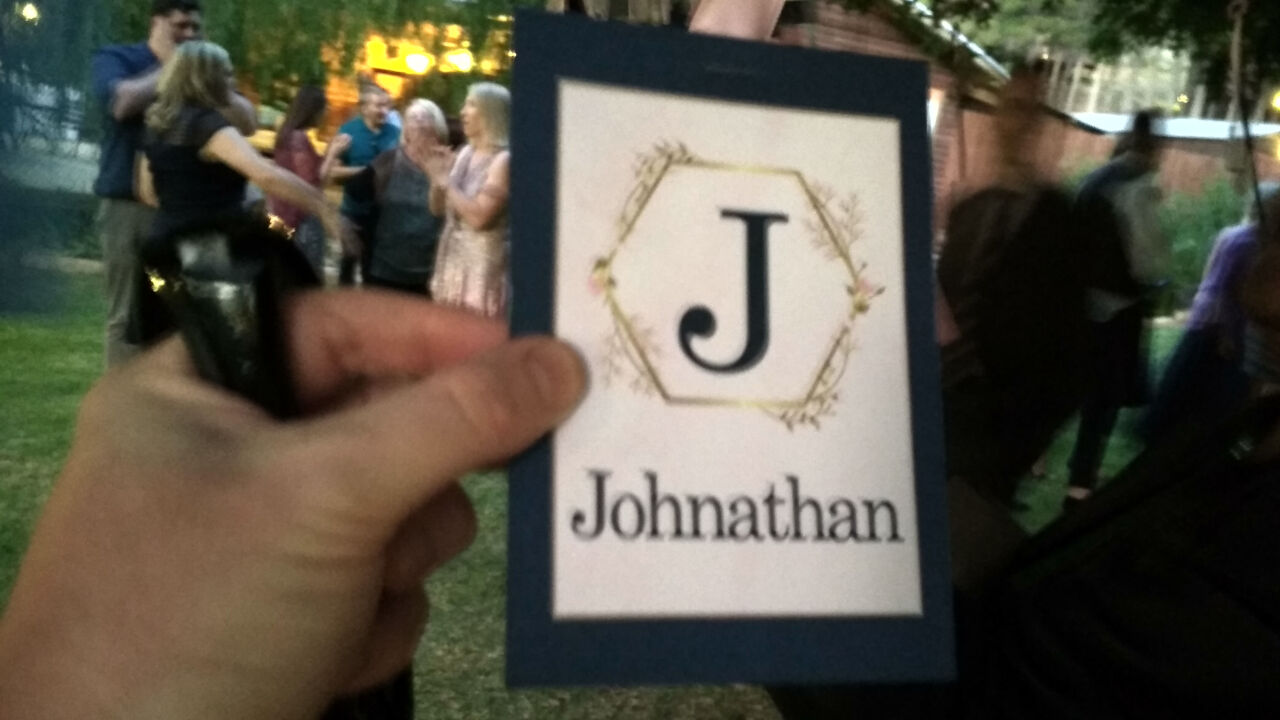 Except for one character being out of place, this was a perfect fairy tale wedding, but I pointed Wouter to
Except for one character being out of place, this was a perfect fairy tale wedding, but I pointed Wouter to  Apologies the first blog post got sent out by mistake.
Weather comparisons between the two countries
Last year, I had come to know that this year s debconf is happening in Canada, a cold country. Hence, few weeks/month back, I started trying to find information online when I stumbled across few discussion boards where people were discussing about Innerwear and Outerwear and I couldn t understand what that was all about. Then somehow stumbled across this Video, which is of a game called the Long Dark and just seeing couple of episodes it became pretty clear to me why the people there were obsessing with getting the right clothes and everything about it. Couple of Debconf people were talking about the weather in Montreal, and surprise, surprise it was
Apologies the first blog post got sent out by mistake.
Weather comparisons between the two countries
Last year, I had come to know that this year s debconf is happening in Canada, a cold country. Hence, few weeks/month back, I started trying to find information online when I stumbled across few discussion boards where people were discussing about Innerwear and Outerwear and I couldn t understand what that was all about. Then somehow stumbled across this Video, which is of a game called the Long Dark and just seeing couple of episodes it became pretty clear to me why the people there were obsessing with getting the right clothes and everything about it. Couple of Debconf people were talking about the weather in Montreal, and surprise, surprise it was 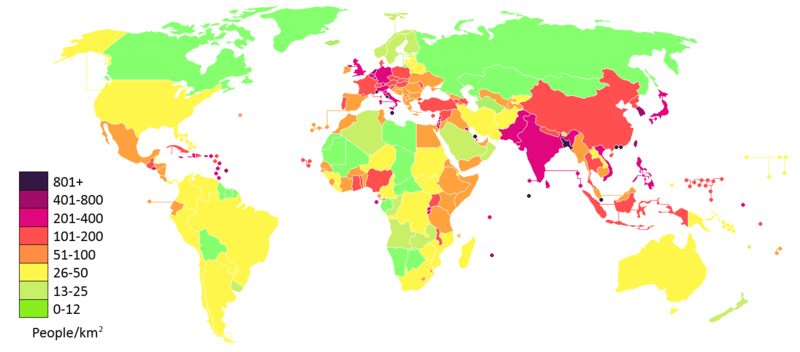 Population Density
As well in the game and whatever I could find on the web, Canada seems to be on the lower side as far as population is concerned.
Population Density
As well in the game and whatever I could find on the web, Canada seems to be on the lower side as far as population is concerned.  Rail
This is one thing that is similar in both the great countries. India has Indian Railways and while the Canadians have their own mountain railway called
Rail
This is one thing that is similar in both the great countries. India has Indian Railways and while the Canadians have their own mountain railway called  Business houses, Political Families
This is again something that is similar in both the countries, it seems (from afar) that its only few business houses and more importantly political families which have governed for years. From what little I could understand, both India and Canada have first past the post system which as shared by its critics is unfair to new and small parties. It would be interesting to see if Canada does a re-think. For India, it would need a massive public education outreach policy and implementation. We just had elections in 5 states of India with U.P. (with respect to area-size and population density) and from the last several years, the EVM s (Electronic Voting Machines) tries to make sure that nobody could know which area which party got the most votes. This is to make sure the winning party is not able to take revenge on people or areas which did not vote for them. Instead you have general region counting of votes with probably even the Election Commission not knowing which EVM went to what area and what results are there in sort of double-blind methodology.
As far as Business houses are concerned, I am guessing it s the same world-over, only certain people hold the wealth while majority of us are in hard-working, non-wealthy status.
Business houses, Political Families
This is again something that is similar in both the countries, it seems (from afar) that its only few business houses and more importantly political families which have governed for years. From what little I could understand, both India and Canada have first past the post system which as shared by its critics is unfair to new and small parties. It would be interesting to see if Canada does a re-think. For India, it would need a massive public education outreach policy and implementation. We just had elections in 5 states of India with U.P. (with respect to area-size and population density) and from the last several years, the EVM s (Electronic Voting Machines) tries to make sure that nobody could know which area which party got the most votes. This is to make sure the winning party is not able to take revenge on people or areas which did not vote for them. Instead you have general region counting of votes with probably even the Election Commission not knowing which EVM went to what area and what results are there in sort of double-blind methodology.
As far as Business houses are concerned, I am guessing it s the same world-over, only certain people hold the wealth while majority of us are in hard-working, non-wealthy status.
 Northern Lights, Aurora Borealis
Apart from all the social activities that Montreal is famous for, somebody told/shared with me that it is possible to see the Northern Lights, Aurora Borealis can be seen in Canada. I dunno how true or not it is, while probably in Montreal it isn t possible to see due to light pollution, but maybe around 40-50 kms. from the city ? Can people see it from Canada ? IF yes, how far would you have to go ? Are there any companies or people who take people to see the Northern Lights.
While I still have to apply for bursary, and if that gets ok, then try getting the visa, but if that goes through, apart from debconf and social activities happening in and around Montreal, Museums, Music etc. , this would be something I would like to experience if it s possible. While I certainly would have to be prepared for the cold that would be, if it s possible, no offence to debconf or anybody else but it probably would be the highlight of the entire trip if its possible. This should be called/labelled as the greatest show on earth TM.
Northern Lights, Aurora Borealis
Apart from all the social activities that Montreal is famous for, somebody told/shared with me that it is possible to see the Northern Lights, Aurora Borealis can be seen in Canada. I dunno how true or not it is, while probably in Montreal it isn t possible to see due to light pollution, but maybe around 40-50 kms. from the city ? Can people see it from Canada ? IF yes, how far would you have to go ? Are there any companies or people who take people to see the Northern Lights.
While I still have to apply for bursary, and if that gets ok, then try getting the visa, but if that goes through, apart from debconf and social activities happening in and around Montreal, Museums, Music etc. , this would be something I would like to experience if it s possible. While I certainly would have to be prepared for the cold that would be, if it s possible, no offence to debconf or anybody else but it probably would be the highlight of the entire trip if its possible. This should be called/labelled as the greatest show on earth TM. 
 The Independent reports that David Cameron
The Independent reports that David Cameron  So I
So I  Yet another yearly summary of my running activities. It seems, indeed,
that running has now slightly taken precedence over free software
activities in my life and priorities for my free time.
To my fellow free software friends: don't worry, I'm not on my way to
stop investing my time in Debian. It's quite clear that I'm reducing
my involvement, mostly because days only have 24 hours...not because
I'm bored or tired by free software development.
But, certainly, it became an important thing that running currently
has a small priority over Debian nowadays, for me.
So, what happened on that front in 2012 for running bubulle?
I finally managed to run 2900 km during the year, which is over 400km
more than 2011. This is mostly due to the increasing part of running
in my daily commute : a typical work week can now be something like
this:
Yet another yearly summary of my running activities. It seems, indeed,
that running has now slightly taken precedence over free software
activities in my life and priorities for my free time.
To my fellow free software friends: don't worry, I'm not on my way to
stop investing my time in Debian. It's quite clear that I'm reducing
my involvement, mostly because days only have 24 hours...not because
I'm bored or tired by free software development.
But, certainly, it became an important thing that running currently
has a small priority over Debian nowadays, for me.
So, what happened on that front in 2012 for running bubulle?
I finally managed to run 2900 km during the year, which is over 400km
more than 2011. This is mostly due to the increasing part of running
in my daily commute : a typical work week can now be something like
this: